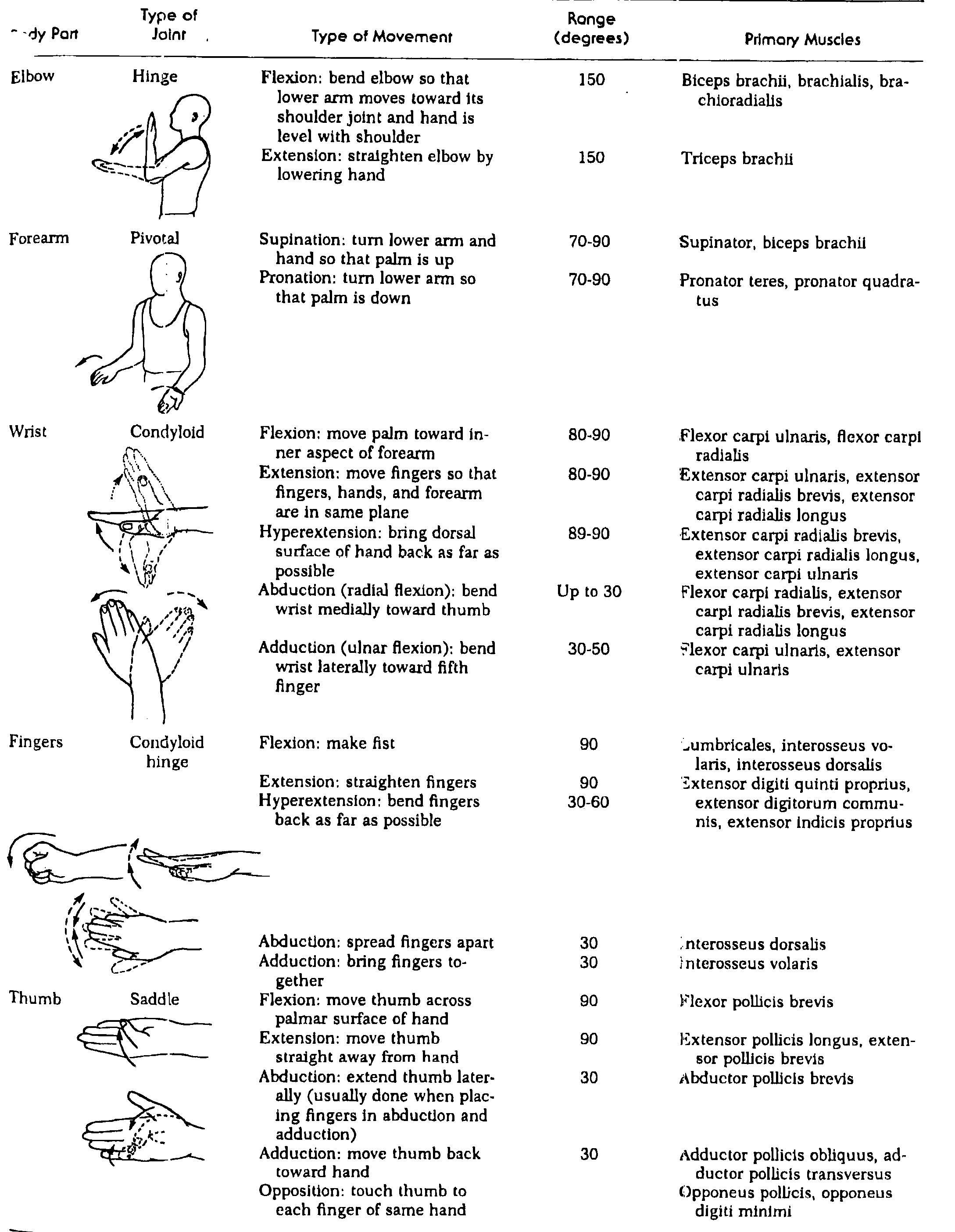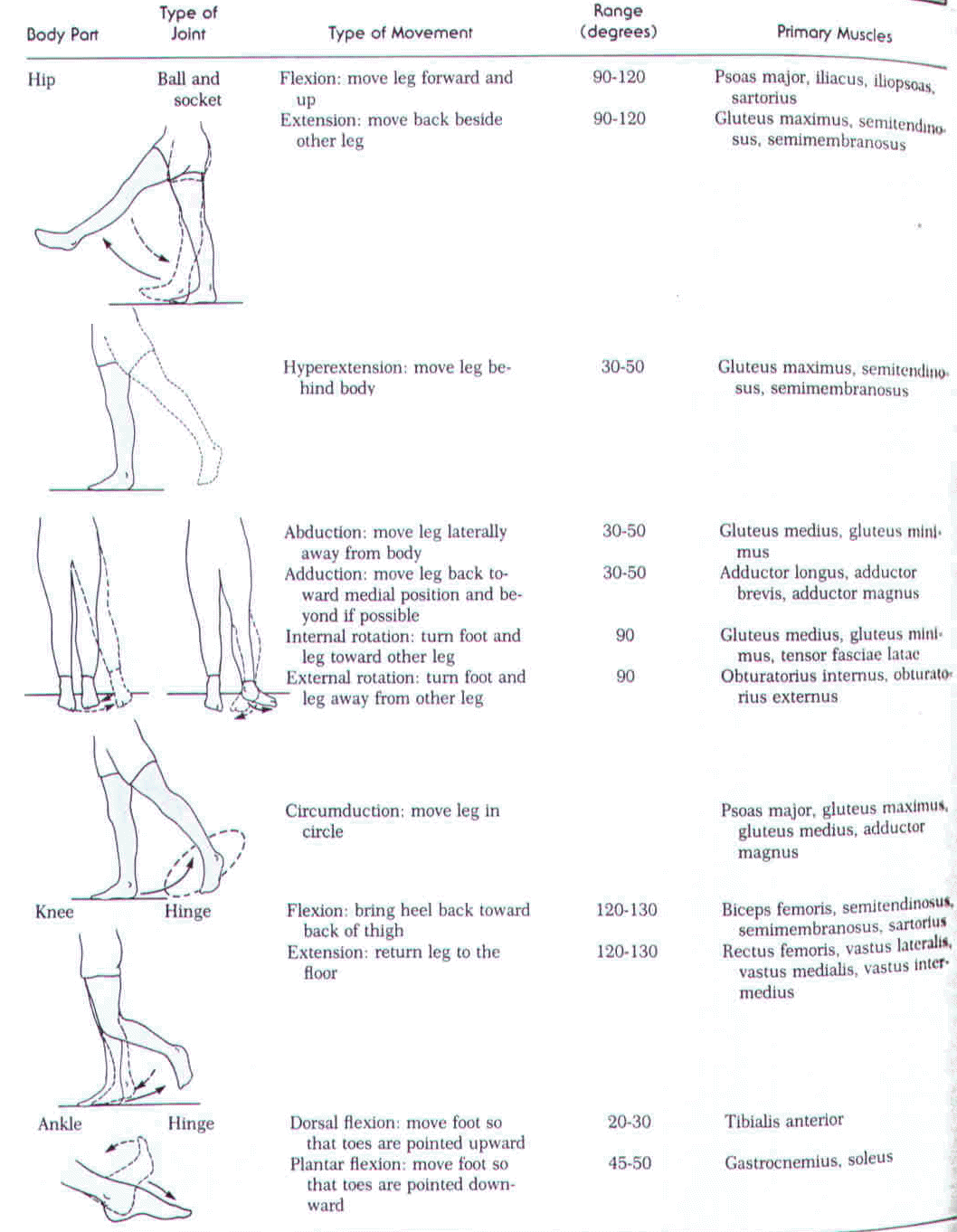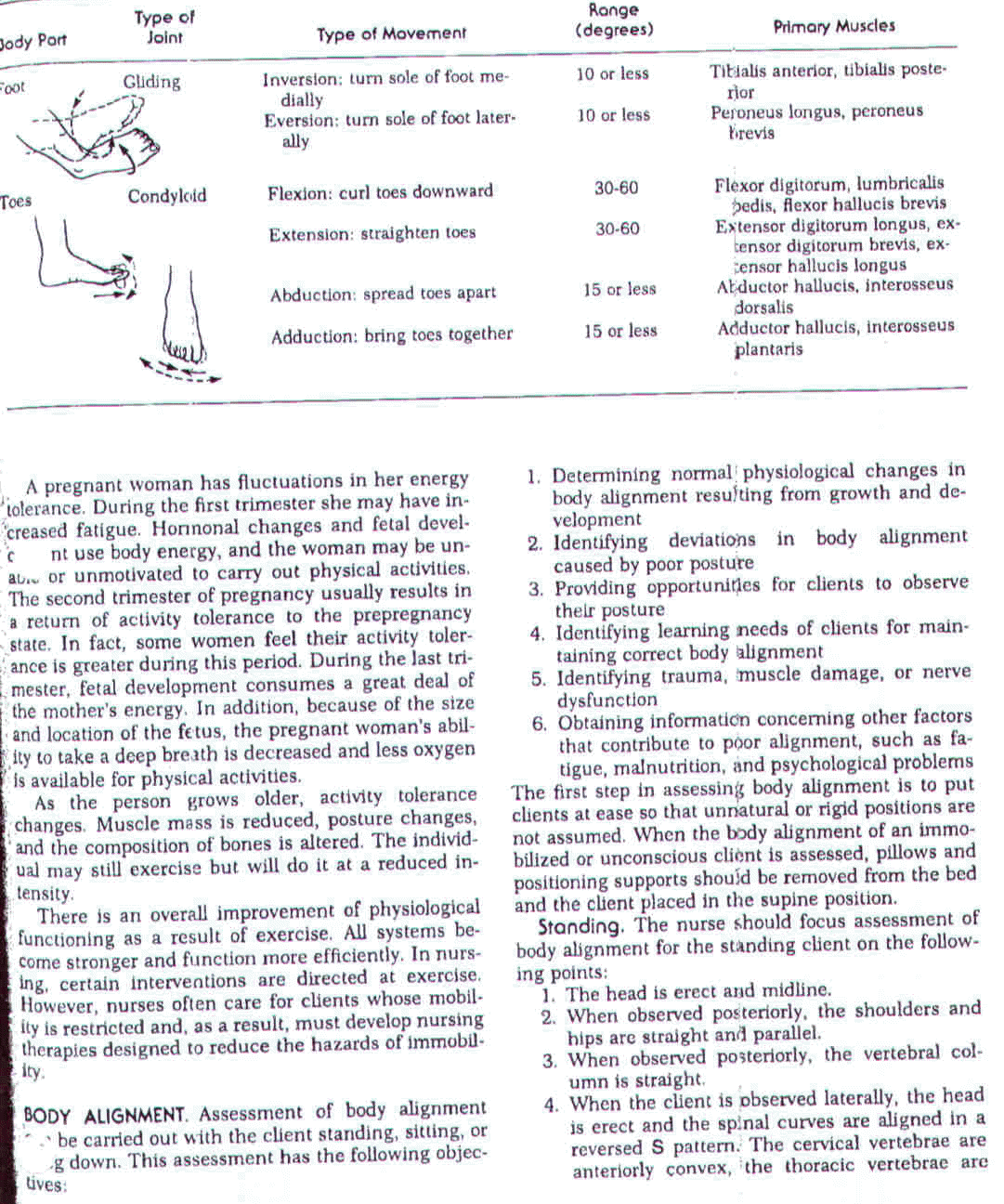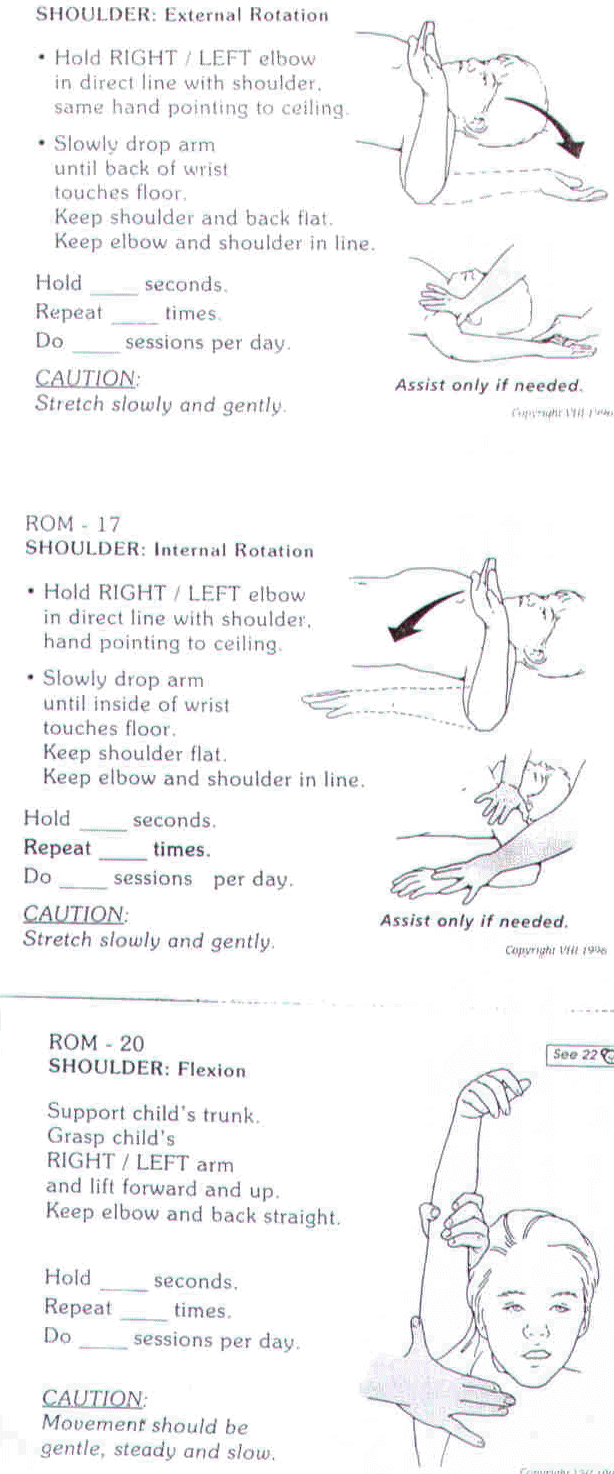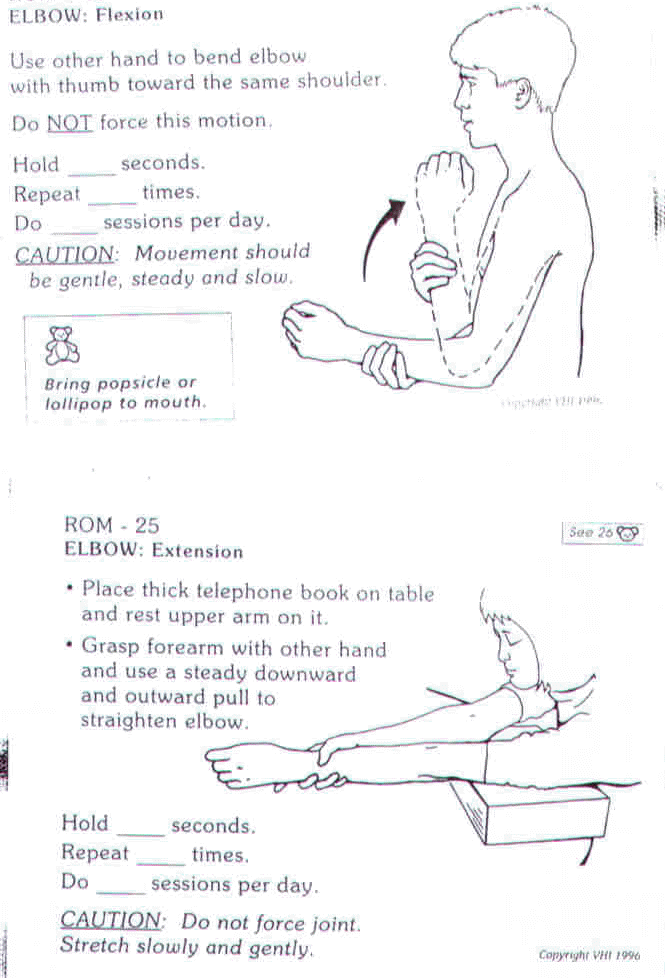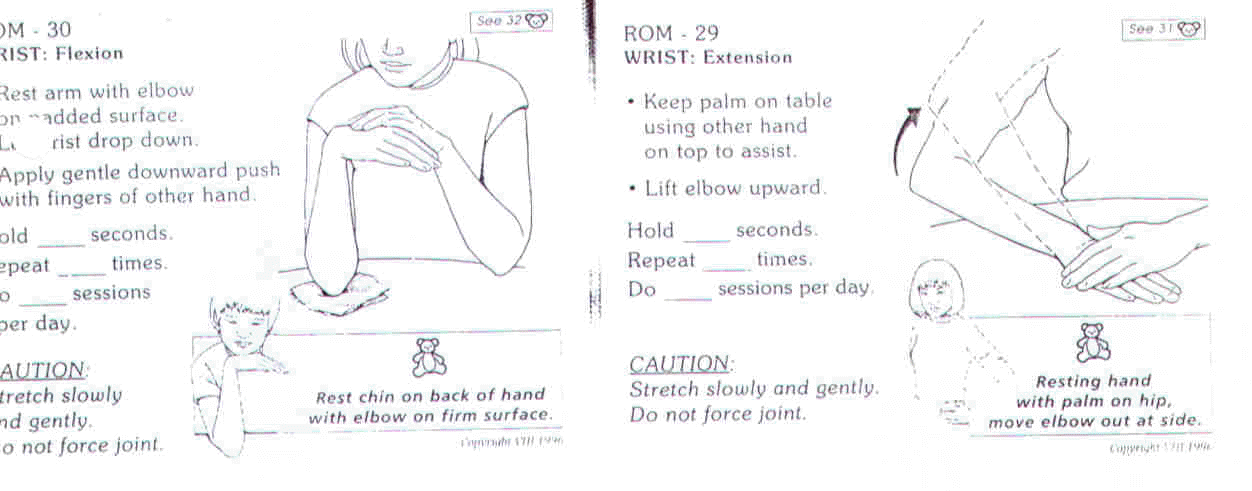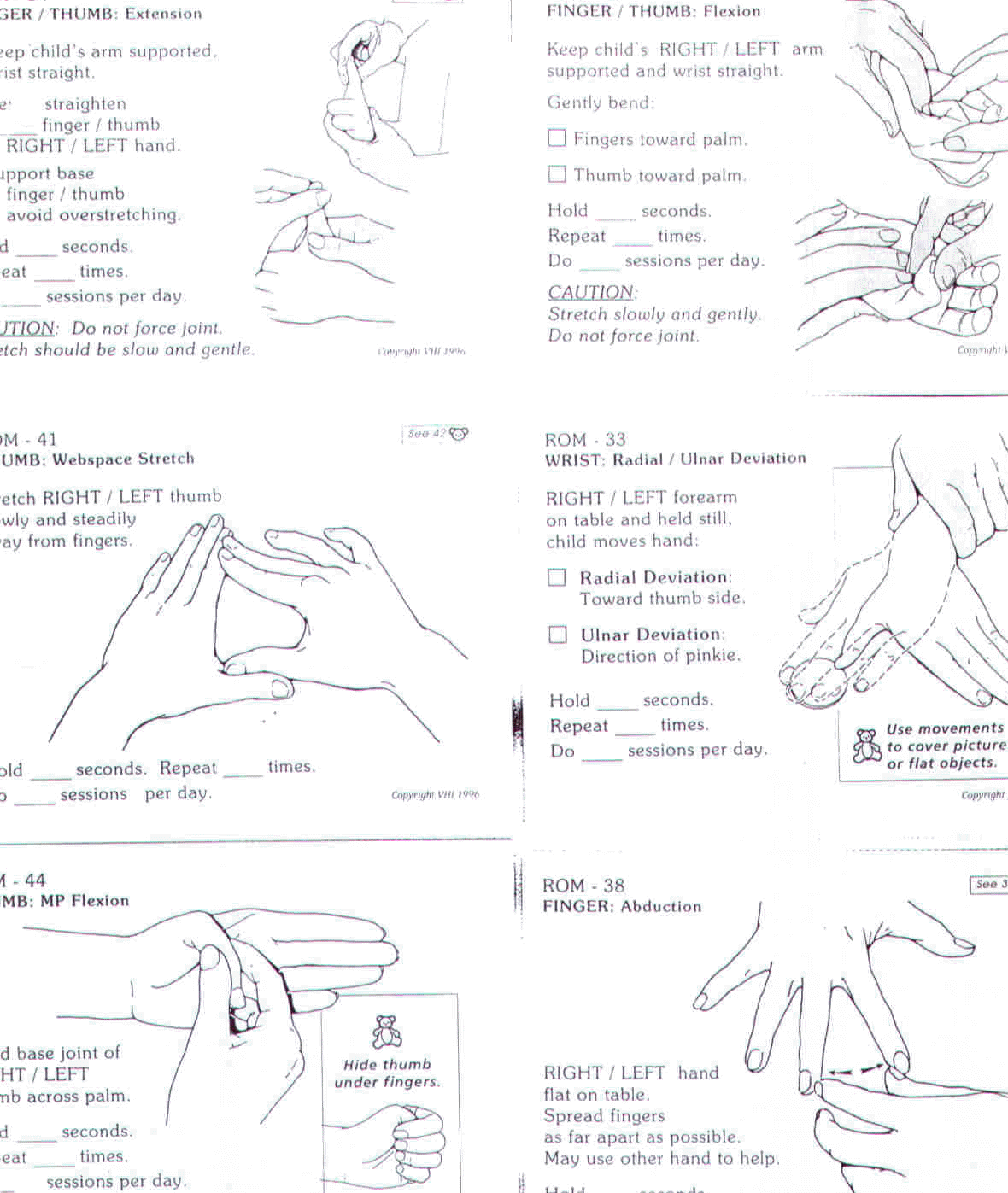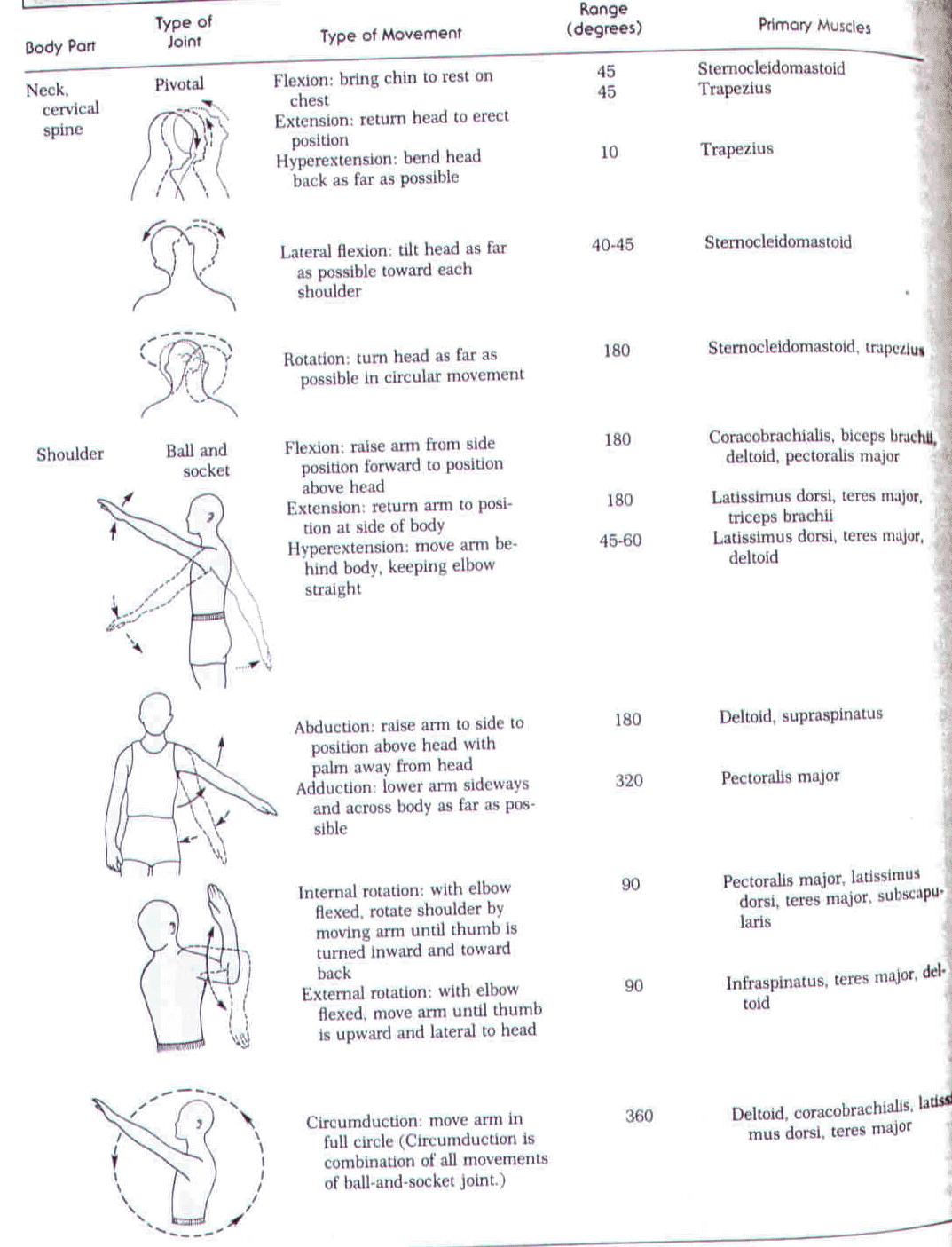
Range of Motion
Range of motion is essential for all SMA children simply because, "If you don't use it, you lose it." Because our children are so weak there are many muscles that tense up and many joints that just are not utilized. Our bodies are designed by triggers. For example, when you supinate and then pronate your wrist, that sends a message to our control center saying, "I need that motion." If we don't utilize this range of motion, then no trigger is sent; therefore, we believe we don't need it anymore and thus contractures are formed.
Contractures can be very painful, and can even further limit the abilities of your child. We as parents need to spend time throughout the day actively physically doing these different range of motions in the different areas for our children. I am not familiar with what is common with all SMA patients but I know what is common for my daughter. This is why I have included the ROM list in its entirety, so that anyone can go down the list and evaluate which specific range of motions their child needs help with.
With Crystal, I stretch and rotate for her the following areas:
1.) Ankles joint, along with posterior tibial muscle. (Dorsiflexion)
2.) Wrists from supination to pronation and return.
3.)Shoulders: Abduct and adduct.
4.)Fingers: Flex and Extend. Along with relaxing the muscles.
5.)Back: She is hyperextended so I stretch her back the opposite way from the hyperextension.
6.)Toes: Flex and Extend.
7.)Knees: Extend, straightening it out completely, then I flex going back to the posterior thigh until I feel
tightness.
8.)Spine: From right to left, first securing the thoracic cavity ,then securing the lumbar cavity.
9.)This one is new so bare with me, I recently learned that Crystal was ulnarly deviated and along with
bracing, traction and ROM we are hoping to correct this before it develops into a contracture. In simple
terms: it is the motion that the hand would perform from left to right using the wrist joint as the point of
flexion.
Crystal Actually has braces for her fingers and ankles that help relax the tense muscles which cause her finger to stay curled and her feet stay in the plantar flexion position. They both have been very effective and now she is able keep her finger and ankles relaxed while not in the braces.
Here is the list:

